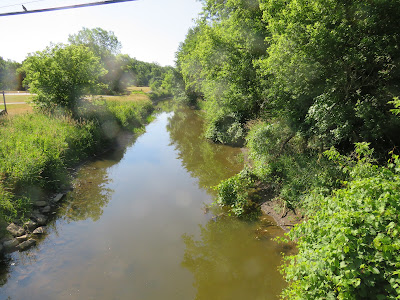The early-morning temperature is 73 degrees under sunny skies with a westerly breeze as I enter a privately-owned, 24-acre conservation easement just east of Alma. Years ago, the owner contracted with the state to maintain this land for wildlife habitat. As a volunteer for the Chippewa Watershed Conservancy, I hike the property annually and report on the owner’s level of compliance. Following a perimeter path, I spot 2 types of newly-formed Goldenrod galls, nut and flower. Since much of the land is open grassland mixed with a few shallow, marshy ponds providing good dragonfly habitat, I’m not surprised to see several of them flying and alighting. First, I spot a Widow Skimmer in the underbrush. Up ahead, a Meadowhawk catches my eye. This dragonfly will eat almost any soft-bodied flying insect including mosquitoes, flies, small moths, mayflies, and termites. Nearby, I see a Saddlebags Skimmer whose nymph is green with bits of browning coloring (stock photo). Following the mown trail, I come upon a Banded Pennant. The “pennants” are among the few dragonflies whose wings are marked a bit like butterflies. They perch according to their name – like flags at the tip of twigs or stems. They even sway and pivot in the summer breezes. Moving off the trail to get a closer look, I notice a patch of Purple Prairie Clover and a patch of Black-eyed Susans. Also, I come upon a Milkweed plant displaying a young 1-inch seedpod. Since it’s edible at this stage, I break it off and enjoy its mild flavor. After trudging through a stand of 6-ft tall Reed Canary Grass, I approach a small Cottonwood tree where a Yellowthroat is singing loud and clear. Further ahead, I observe a Clouded Sulfur Butterfly in the dense grass. Its caterpillar is smooth and green with light stripes on the sides (stock photo). Soon, I spot a Little Wood Satyr Butterfly resting on a decayed log. Its caterpillar is greenish brown, with lighter lengthwise stripes and numerous tubercles (stock photo). Turning back toward the car as the wind picks up, I look down to see some swaying Bottlebrush grass and look up to see swaying Cottonwood leaves. Scanning the meadow, I spot a single blossom of Purple Coneflower and a single blossom of Sow Thistle. A variety of sedges, each with their characteristic seedheads catch my eye, including Fox, Nut and Crested. Back on the long driveway to the car, I pause to listen to a Killdeer flying overhead. These birds can be seen flying or walking, but since they lack a hind toe, they do not have the ability to perch.
Time to slow down
Summer speeds along
Smell a milkweed flower
Hear a cicada’s song
Time to leave the trail
Ease the hiking pace
Alighting swallowtail
Lovely Queen Anne’s Lace
Time to be seated
Lo, a mourning dove
Taste a wild berry
Eye the clouds above
D. DeGraaf



